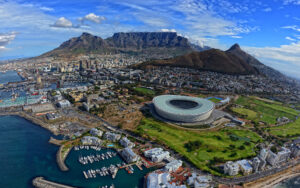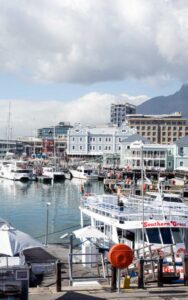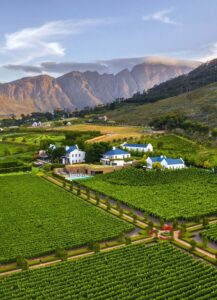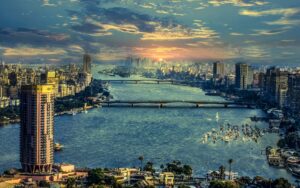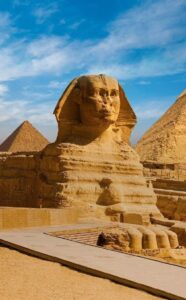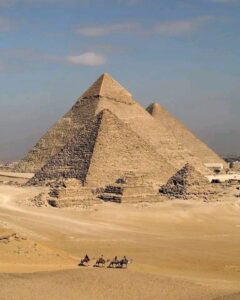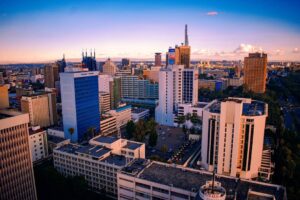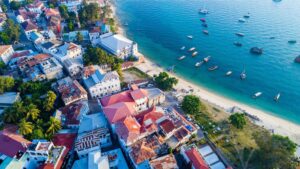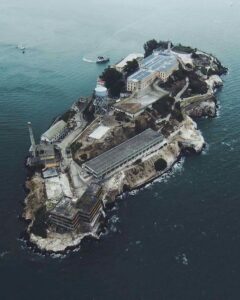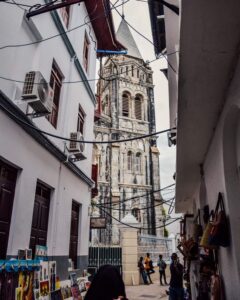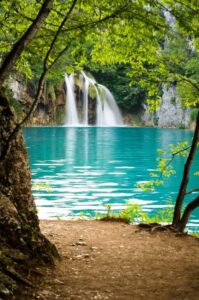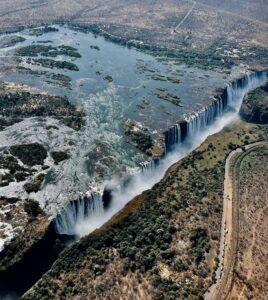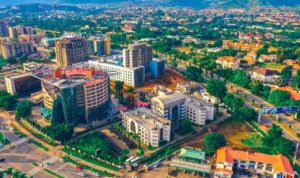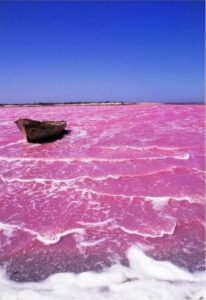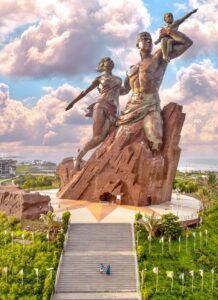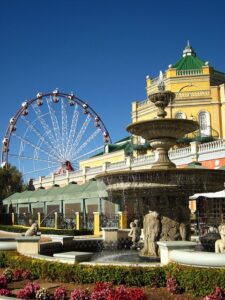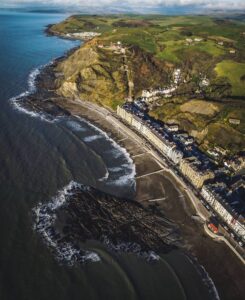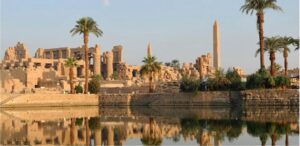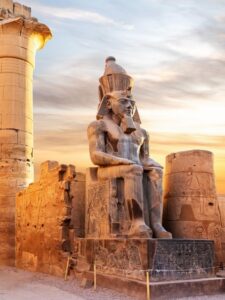Tourism is a powerful connector of cultures and a key economic driver for many nations, particularly in Africa. With the rise of technology, artificial intelligence (AI) has become an essential tool in discovering, analyzing, and presenting detailed information on top tourist destinations. AI helps gather the most accurate and up-to-date information, making it easier for travelers to plan their journeys. In this detailed guide, we explore ten of the most popular tourist cities in Africa. These cities have been selected based on their rich history, geographic beauty, tourist attractions, and unique cultures. Each city offers something different, and through AI, we have gathered comprehensive insights into their charm, attractions, local food, and culture. Let’s take a journey through Africa’s most captivating destinations, ranked from the best city to the next.
1. Cape Town, South Africa
History:
Founded in 1652 by Dutch settlers, Cape Town is one of South Africa’s oldest cities. Over the centuries, it has developed into a multicultural hub influenced by European, African, and Asian cultures.
Geography:
Located at the southern tip of Africa, Cape Town is nestled between the Atlantic Ocean and Table Mountain, providing one of the most stunning cityscapes in the world.
Top Attractions:
-
- Table Mountain: A flat-topped mountain offering panoramic views of the city and ocean.
-
- Robben Island: Famous for its prison where Nelson Mandela was held, now a UNESCO World Heritage Site.
-
- Victoria & Alfred Waterfront: A bustling area of shops, restaurants, and entertainment.
-
- Cape Winelands: Just outside the city, offering world-class wines and stunning landscapes.
Best Hotels:
-
- One&Only Cape Town: Known for its luxury, located near the V&A Waterfront.
-
- Belmond Mount Nelson Hotel: A historic hotel with stunning views of Table Mountain.
People and Food:
Capetonians are known for their warm and friendly nature. The city’s cuisine is a fusion of African, European, and Asian influences. Dishes like Cape Malay curry and bobotie are local favorites, along with fresh seafood from the Atlantic coast.
2. Marrakech, Morocco
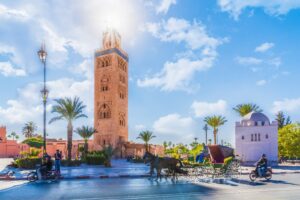
History:
Founded in 1062, Marrakech has been a cultural and religious center for centuries. Its history is deeply rooted in the Berber Empire and is reflected in its architecture, palaces, and vibrant souks.
Geography:
Located in western Morocco, Marrakech sits at the foothills of the Atlas Mountains. Its desert climate offers warm days and cool nights.
Top Attractions:
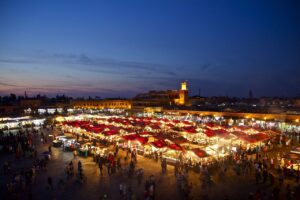


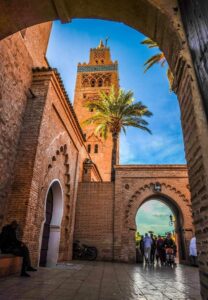
-
- Jemaa el-Fnaa: The city’s main square, known for its lively market and street performers.
-
- Koutoubia Mosque: The largest mosque in Marrakech, a symbol of the city.
-
- Bahia Palace: A stunning example of Moroccan architecture.
-
- Majorelle Garden: A peaceful garden with vibrant blue buildings and exotic plants.
Best Hotels:
-
- La Mamounia: A luxury hotel known for its traditional Moroccan design.
-
- Royal Mansour Marrakech: An opulent hotel offering private riads and impeccable service.
People and Food:
Marrakchis are hospitable and proud of their traditions. The food in Marrakech is rich and flavorful, with dishes like tagine, couscous, and pastilla being popular choices. Moroccan mint tea is a must-try, often served with traditional sweets.
3. Cairo, Egypt
History:
As one of the oldest cities in the world, Cairo’s history stretches back thousands of years. It is the capital of Egypt and a gateway to some of the most iconic monuments of ancient civilization, including the Pyramids of Giza.
Geography:
Cairo is situated along the banks of the Nile River in northern Egypt. Its location in the desert ensures a dry and hot climate, but the Nile brings life and greenery to the city.
Top Attractions:
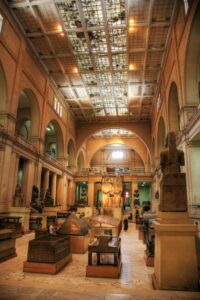
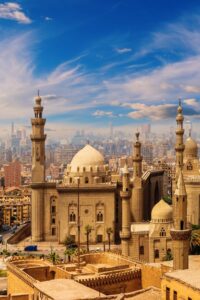
-
- Pyramids of Giza: The last remaining of the Seven Wonders of the Ancient World.
-
- The Sphinx: A massive limestone statue guarding the pyramids.
-
- Egyptian Museum: Home to an extensive collection of ancient Egyptian artifacts, including the treasures of Tutankhamun.
-
- Islamic Cairo: A UNESCO World Heritage Site, featuring historic mosques, bazaars, and architecture.
Best Hotels:
-
- Marriott Mena House: Located near the Pyramids of Giza with stunning views.
-
- Kempinski Nile Hotel: A luxury hotel with views of the Nile and central Cairo.
People and Food:
Cairenes are known for their warmth and welcoming attitude. Egyptian food is hearty and flavorful, with dishes like koshari, ful medames, and molokhia being staples. Fresh bread, known as baladi, is a key part of every meal.
4. Nairobi, Kenya
History:
Founded in 1899, Nairobi started as a simple railway depot but quickly grew into the capital of Kenya. Today, it is a bustling metropolis and a gateway to some of Africa’s most famous wildlife reserves.
Geography:
Located in the central highlands of Kenya, Nairobi enjoys a moderate climate due to its elevation. The city is surrounded by savannas and national parks, making it unique for its urban-wildlife interaction.
Top Attractions:
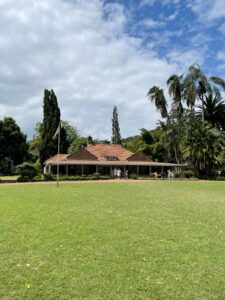

-
- Nairobi National Park: A wildlife reserve located just outside the city, home to lions, giraffes, and rhinos.
-
- David Sheldrick Wildlife Trust: A renowned elephant orphanage.
-
- Giraffe Centre: Offers visitors the chance to interact with endangered Rothschild giraffes.
-
- Karen Blixen Museum: The former home of the famous author of Out of Africa.
Best Hotels:
-
- Giraffe Manor: A boutique hotel famous for its resident giraffes that visit during breakfast.
-
- Hemingways Nairobi: A luxury hotel offering spacious suites and stunning views of the Ngong Hills.
People and Food:
Nairobians are diverse and welcoming, reflecting the many ethnic groups of Kenya. The food is equally varied, with traditional dishes like nyama choma (grilled meat) and ugali (a maize porridge) being popular. Nairobi also has a growing international food scene.
5. Zanzibar City, Tanzania
History:
Zanzibar City, particularly its historic Stone Town, is steeped in history, blending African, Arab, Persian, and European influences. The city was a key center for the spice trade and the East African slave trade.
Geography:
Zanzibar City is located on Unguja Island, the largest island in the Zanzibar Archipelago off the coast of Tanzania. Its white sandy beaches and turquoise waters make it a tropical paradise.
Top Attractions:
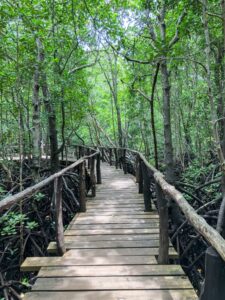

-
- Stone Town: A UNESCO World Heritage Site, known for its narrow streets and historic buildings.
-
- Forodhani Gardens: A popular spot for street food and stunning views of the Indian Ocean.
-
- Prison Island: Famous for its giant tortoises and history as a former prison and quarantine station.
-
- Jozani Forest: A tropical rainforest home to the endemic red colobus monkeys.
Best Hotels:
-
- Park Hyatt Zanzibar: A luxury hotel located on the beachfront in Stone Town.
-
- Zuri Zanzibar: Known for its beautiful bungalows and private beach access.
People and Food:
Zanzibaris are known for their friendliness and laid-back lifestyle. The local cuisine reflects the island’s spice trade history, with dishes like spiced rice (pilau), seafood curries, and ugali. Street food, such as Zanzibar pizza, is a popular treat.
6. Victoria Falls, Zimbabwe/Zambia
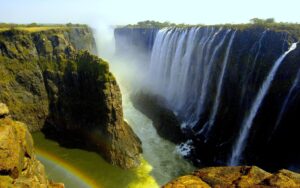
History:
Named after Queen Victoria by Scottish explorer David Livingstone in 1855, Victoria Falls has long been one of Africa’s most famous landmarks. Known as “Mosi-oa-Tunya” (The Smoke That Thunders) by locals, it is the largest waterfall in the world by combined width and height.
Geography:
Victoria Falls straddles the border between Zimbabwe and Zambia, on the Zambezi River. The surrounding area is a UNESCO World Heritage Site and features lush rainforests, unique wildlife, and stunning gorges.
Top Attractions:
-
- Victoria Falls National Park: Offering breathtaking views of the waterfall.
-
- Devil’s Pool: A natural pool at the edge of the falls where adventurous visitors can swim.
-
- Zambezi River Cruises: A relaxing way to view wildlife and the stunning landscapes.
-
- Bungee Jumping: From the Victoria Falls Bridge for thrill-seekers.
Best Hotels:
-
- Victoria Falls Hotel: A historic hotel with views of the falls and the Zambezi River.
-
- The Royal Livingstone Hotel: Located on the Zambian side, known for its luxury and proximity to the falls.
People and Food:
The local population on both sides of the falls is welcoming and proud of their natural heritage. Zimbabwean and Zambian food includes sadza (maize porridge), nyama (meat stews), and freshly caught fish from the Zambezi River.
7. Dakar, Senegal
History:
Founded in 1857 as a French colonial town, Dakar is the capital of Senegal and has played an important role in the transatlantic slave trade. Today, it is a vibrant city known for its music, arts, and cultural festivals.
Geography:
Dakar is located on the Cape Verde Peninsula along the Atlantic coast, making it the westernmost
city in mainland Africa. The city enjoys a mild coastal climate.
Top Attractions:
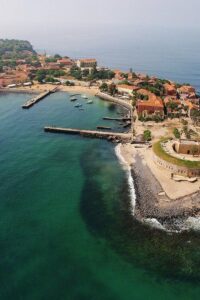
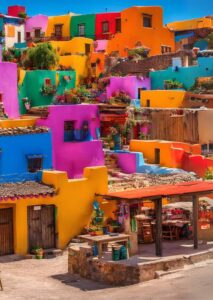
-
- Gorée Island: A UNESCO World Heritage Site known for its role in the Atlantic slave trade.
-
- African Renaissance Monument: A towering statue symbolizing African unity and progress.
-
- Lac Rose (Pink Lake): A famous salt lake known for its pinkish hue.
-
- Village des Arts: A vibrant artist community showcasing Senegalese creativity.
Best Hotels:
-
- Terrou-Bi Hotel: A luxury hotel with beach access and a casino.
-
- Radisson Blu Hotel Dakar Sea Plaza: Offering modern comfort and stunning ocean views.
People and Food:
The people of Dakar are known for their friendliness and hospitality, which is deeply rooted in the Senegalese concept of teranga (hospitality). Senegalese cuisine is flavorful and varied, with dishes like thieboudienne (fish and rice), yassa (marinated chicken or fish), and mafé (peanut stew) being popular.
8. Johannesburg, South Africa
History:
Johannesburg was founded in 1886 after the discovery of gold, leading to a gold rush that turned it into the economic heart of South Africa. Today, it is a bustling metropolis and the financial capital of the continent.
Geography:
Located on the eastern plateau known as the Highveld, Johannesburg enjoys a temperate climate with sunny, dry winters and warm, rainy summers. Its urban sprawl is contrasted by nearby wildlife reserves.
Top Attractions:

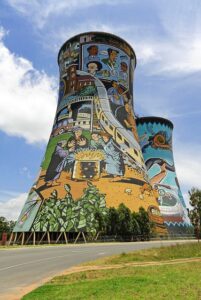
-
- Apartheid Museum: A powerful museum documenting the history of apartheid in South Africa.
-
- Constitution Hill: A former prison now serving as a museum and constitutional court.
-
- Gold Reef City: A theme park and museum that explores the city’s gold-mining history.
-
- Soweto: A historic township known for its role in the anti-apartheid struggle, including Nelson Mandela’s former home.
Best Hotels:
-
- The Saxon Hotel, Villas & Spa: A luxurious hotel known for its tranquil setting.
-
- The Michelangelo Hotel: Located in the heart of Sandton, offering elegant accommodation.
People and Food:
Johannesburg’s residents, often called Joburgers, are diverse and dynamic. The food scene reflects this diversity, offering traditional South African dishes like bobotie, biltong, and braai (barbecue), as well as flavors from across Africa and the world.
9. Addis Ababa, Ethiopia
History:
Founded in 1886 by Emperor Menelik II, Addis Ababa is the political and cultural capital of Ethiopia. It has a rich history as the headquarters of the African Union and is a center for diplomacy in Africa.
Geography:
Situated at the foot of Mount Entoto, Addis Ababa is one of the highest capital cities in the world, giving it a mild, temperate climate year-round.
Top Attractions:


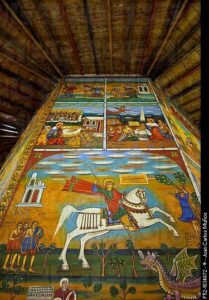

-
- National Museum of Ethiopia: Home to the remains of Lucy, one of the oldest human ancestors.
-
- Holy Trinity Cathedral: A major place of worship and the burial site of Emperor Haile Selassie.
-
- Merkato: The largest open-air market in Africa.
-
- Mount Entoto: Offering panoramic views of the city and surrounding countryside.
Best Hotels:
-
- Sheraton Addis: A luxury hotel known for its opulence and excellent service.
-
- Hyatt Regency Addis Ababa: A modern hotel located in the heart of the city.
People and Food:
Ethiopians are known for their pride in their ancient history and hospitality. Ethiopian cuisine is unique, with injera (a sourdough flatbread) served with various wat (stews) being the staple food. Coffee is a key part of Ethiopian culture, and traditional coffee ceremonies are a must-experience.
10. Luxor, Egypt
History:
Luxor, often referred to as the world’s greatest open-air museum, was once the ancient city of Thebes, the capital of Egypt during the height of the New Kingdom. The city is home to some of Egypt’s most iconic ancient temples and tombs.
Geography:
Located on the east bank of the Nile River in southern Egypt, Luxor enjoys a hot desert climate, with the Nile providing fertile land amidst the arid surroundings.
Top Attractions:

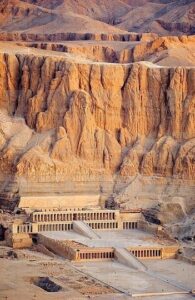
-
- Karnak Temple: One of the largest ancient religious complexes in the world.
-
- Valley of the Kings: The final resting place of many pharaohs, including Tutankhamun.
-
- Luxor Temple: A stunning ancient temple complex in the heart of the city.
-
- Hatshepsut’s Temple: A mortuary temple dedicated to one of Egypt’s few female pharaohs.
Best Hotels:
-
- Sofitel Winter Palace Luxor: A luxury hotel with historical significance, once hosting explorers like Howard Carter.
-
- Hilton Luxor Resort & Spa: Offering modern luxury with views of the Nile.
People and Food:
Luxor’s residents are known for their hospitality and connection to their city’s rich history. Egyptian cuisine in Luxor is similar to that in Cairo, with popular dishes including kebabs, falafel, and stuffed pigeon. The city’s proximity to the Nile ensures a plentiful supply of fresh fish and vegetables.
Conclusion:
These ten cities across Africa represent the continent’s rich diversity, from the cosmopolitan energy of Cape Town to the ancient wonders of Luxor. Each city has its own distinct character, shaped by its history, geography, and people. Thanks to AI-powered insights, this guide provides detailed and accurate information that highlights the best Africa has to offer, allowing travelers to make well-informed choices for their next adventure. Whether you are looking to explore ancient ruins, immerse yourself in vibrant cultures, or experience stunning natural landscapes, these cities offer unforgettable experiences that set them apart from one another.


